Hyderabad
Surprisingly enchanting. That is the best way to sum up my weekend in the state capital of India’s Andhra Pradesh. To say that I went to Hyderabad with few expectations is an understatement – apart from Charminar, I wasn’t aware of any of Hyderabad’s charms, which made them all the sweeter once I found them. Hyderabad to often overlooked by travellers in favour of grander historic destinations in India’s north, more exotic destinations on the southwest coast, or the glitz and glamour of Bengaluru and Mumbai. The fact that so many people are unaware of what Hyderabad makes it one of southern India’s best kept secrets.
The large, Muslim-built city of Hyderabad is one night’s train ride north of Chennai on the Charminar Express. The day before I arrived in Hyderabad there had been a civil disturbance over city council plans to demolish a mosque to make way for a Hindu temple to be extended. Hyderabad’s old city is predominantly Muslim, so you can imagine how that news was received. When I arrived in Hyderabad, the receptionist at my hotel warned me off visiting the old city, however the old city of Hyderabad is home to the highlight attraction of Charminar. I decided to take a rickshaw towards the old city, and if things looked rowdy, I’d simply ask the driver to turn around and go back. However as we approached Charminar, the streets were calm and people were going about their business, and there was no small number of tourists around, so I decided to stick with it. ‘Charminar’ means “four minarets” in Hindi and Urdu, and the structure appropriately has, wait for it, four minarets. It was originally built as a mosque in the centre of a roundabout. It is unique because where most mosques have one or two large prayer halls on the ground or first floors, this one had to make use of the limited space in the centre of the junction. The result was a 50 metre tall structure that has several stories of prayer halls – a bit like if a church was built in the style of an office block. It was built in 1591, and its soaring minarets dominate the inner city. However Hyderabad is now a city of nearly 7 million people, making it equivalent to Sydney and Perth combined, and the city has long outgrown Charminar’s facilities. Apart from Friday prayers, when it symbolically opens for devotees, Charminar is now a tourist attraction, and most people go to the nearby Mecca Mosque, with capacity for 10,000 Muslims, to perform their daily prayers. Mecca Mosque is so named because of the bricks which adorn its entrance, mixed with sand from the Muslim holy city in Saudi Arabia. It’s little pieces of history like this that make Hyderabad what it is – a city which still appreciates a time when symbolism and tradition mattered.
Nearby Hyderabad lie the spectacular Golconda Fort and the Qutb Shahi tombs, full of history about the former rulers of Hyderabad. Golconda Fort, draped across a rocky outcrop, affords expansive views of the metropolis to anyone who completes the steep climb. A whole afternoon could be spent at Golconda Fort, where the mountainside is dotted with relics of a time gone by. On the other hand the Qutb Shahi tombs, about two kilometres from the base of the fort, is a cemetery of grand domed shrines set among pretty gardens. Bougainvillia flowers overflow from the lattice outside a couple, their bright colours contrasting with the pasty sandstone and marble of the tombs. The story of Hyderabad goes that after facing defeat at Golconda Fort, the Muslim ruler Qutub Shah founded a new city which he would called ‘Baghnagar’ (‘garden city’ in Hindi). However when his wife, a former dancing girl, converted to Islam and took the Arabic name ‘Hyder’ (pronounced ‘haider’), he named the city after his love. Qutub Shah was of Persian descent, and his dream was
to build a city founded on the cosmopolitan culture of Persia. He envisioned a city of grand boulevards, public squares with space for poetry recital, museums, parks and mosques. Built in the tradition of Esfahan in Iran, Hyderabad was once the most glorious city in southern India. The riches of the royal family were shared among the masses – free health care, free schooling, free public housing were all the hallmarks of Hyderabad’s Nizams, or Muslim rulers, from 1724 to 1948. During this time, a majority of the city’s population converted to Islam by choice, inspired by the generosity of their rulers. In 1948 the city was forcibly incorporated into greater India, and although there was some resistance at the time, these days the majority of people consider themselves subjects of New Delhi, rather than the local Muslim kings. The legacy of the Nizams lives on in Hyderabad through such palaces such as Chowmahalla Palace – recently lovingly restored, and a must-see on any trip to the old city. Another afternoon could be spent ambling along the shores of Hussein Sagar, the pretty and tranquil lake which separates Hyderabad from the sister city of Secunderabad. Sunset seen from the eastern shore is particularly pleasant, watching the pleasure boats dodge the fountains as they head to the Buddha statue in the lake’s centre.
While in Hyderabad I met up with Reza, a friend of mine and Hyderabad local, who kindly took me around the city which was gearing up for the Shia Muslim mourning period of Ashura. Ashura memorialises the Imam Hussein’s bloody martyrdom in the 7th century in present-day Iraq. Reza, his friends, and much of the old city were all dressed in black in the lead-up to Ashura, and he took me to several ashurakhanas, or mourning houses, where Shias congregate at this time. Ashura was marked on the 25th November in 2012, but the date moves around 10 days earlier each year due to the difference between Gregorian and Islamic calendars. If you have the time, you could negotiate a rate with an autorickshaw driver to take you from one Shia Muslim landmark to the next – but bargain hard, and be aware that the list of landmarks are endless. If visiting during Ashura, don’t forget to act with the appropriate reverence – this is a time of serious mourning, akin to a funeral. And finally, be prepared to be dragged to a gem emporium at least one – taxis might be a better option than a rickshaw, although less able to navigate the twisting backalleys which so often lead to the ashurakhanas. If you are interested in shopping, you could scour the old city for bargains (Laad Bazaar is particularly atmospheric), or go upmarket at Banjara Hills, the new-age shopping precinct earning Hyderabad its contemporary monniker, ‘Cyberabad’.
My guidebook accurately described old Hyderabad as being an older, elegant princess, whose time has since passed. However the royal dynasty lives on in Hyderabad, with the younger members still making the social pages of local tabloids, and the older members regularly building new schools and hospitals in the name of charity. As a result, Hyderabad feels somewhat different to the rest of India – it’s a bit cleaner, better planned, and the local ‘scene’ is somewhat more sophisticated. In fact, more than once I almost pinched myself to check that I really was still in India, and not a Malaysian or Middle Eastern city. And that pretty much sums it up – throughout my whole weekend, I was constantly surprised by the unexpected treasures that Hyderabad offered me. And isn’t that the essence of the spirit of travel?
When to go
Go between September and February, when the weather is cooler (Hyderabad swelters in the summer) Hyderabad’s old city is at its most atmospheric during the Muslim festivals of Eid (these will be celebrated in India on 9th August and 16th October this year). Ashura will fall in the second week of November.
Difficulty
Culture shock: 7/10
Language: 4/10
Food: 4/10
Comfort zone: 5/10
Physical demand: 4/10
Advice and warnings
Hyderabad has been the focal point of communal and political violence in the past. The former usually relates to Hindu-Muslim tension, while the latter often concerns a moderately-popular succession bid by Telengana, a region which includes Hyderabad. Neither of these are reasons to avoid Hyderabad, but it makes sense to keep an eye on the media. The old city is not a good place to be if religious tensions are high, and government buildings are better avoided when the Telengana issue is in the news.
Check Smart Traveller or the British Foreign Office for more comprehensive warnings.
Visas
Australians and Pakistanis need a visa to enter India. Applications in Australia cost around A$100, and take about a week to process. Applications from Pakistan are more complicated. Contact your nearest Indian diplomatic mission for details (Melbourne, Islamabad, Sydney).
Getting there and around
From Chennai Central the Charminar Express (12759) takes around 14 hours and leaves at 6:10pm nightly. 2 Tier AC beds can be booked for INR 1280 one way. The return journey is similarly timed and priced. Tickets can be booked through Cleartrip.
From Melbourne and Sydney, Malaysia Airlines flies to Hyderabad via Kuala Lumpur.
Melbourne (from $1366 return)
Sydney (from $1384 return)
From Lahore, fly Pakistan International Airlines to Delhi (from PKR 38030 return), then a separate ticket on Jet Airways from Delhi to Hyderabad (from PKR 17430 return). Be sure to leave ample time between flights, as baggage won’t be transferred automatically, and immigration procedures for Pakistani nationals can be lengthy.
Accommodation
A good, centrally located midrange option is the Quality Inn Residency Hotel. It is conveniently located across the road from Hyderabad Deccan Railway Station, the terminus of the Charminar Express.
Check out more pictures from this surprising weekend at UrbanGallery.

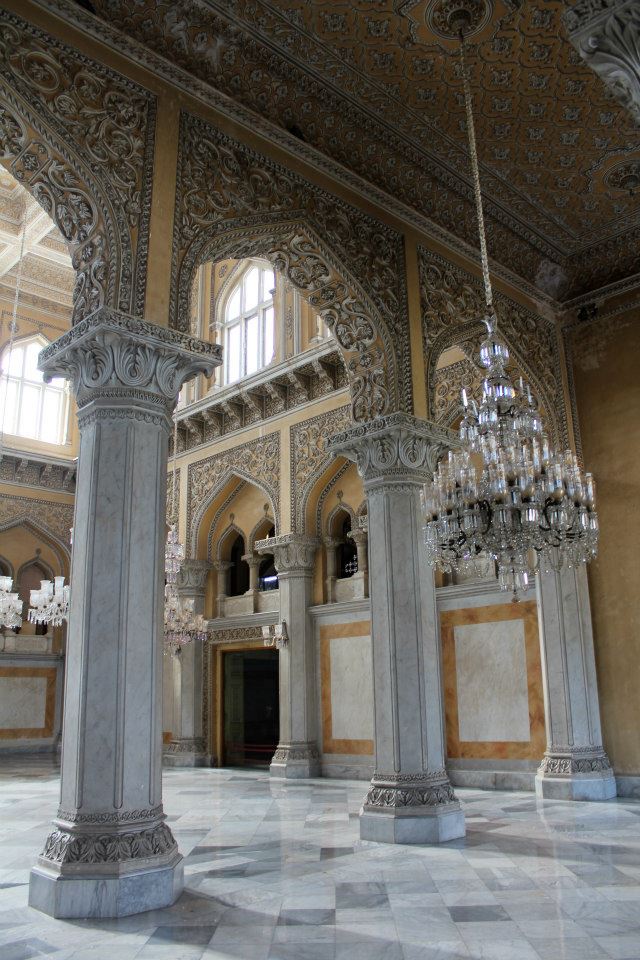

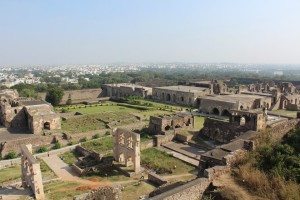
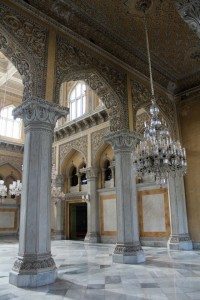
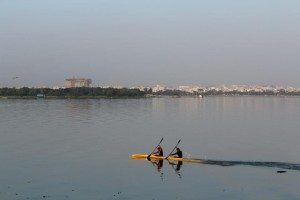
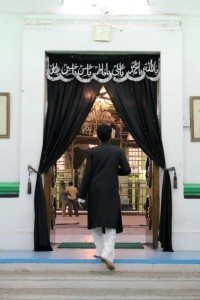



0 Comments